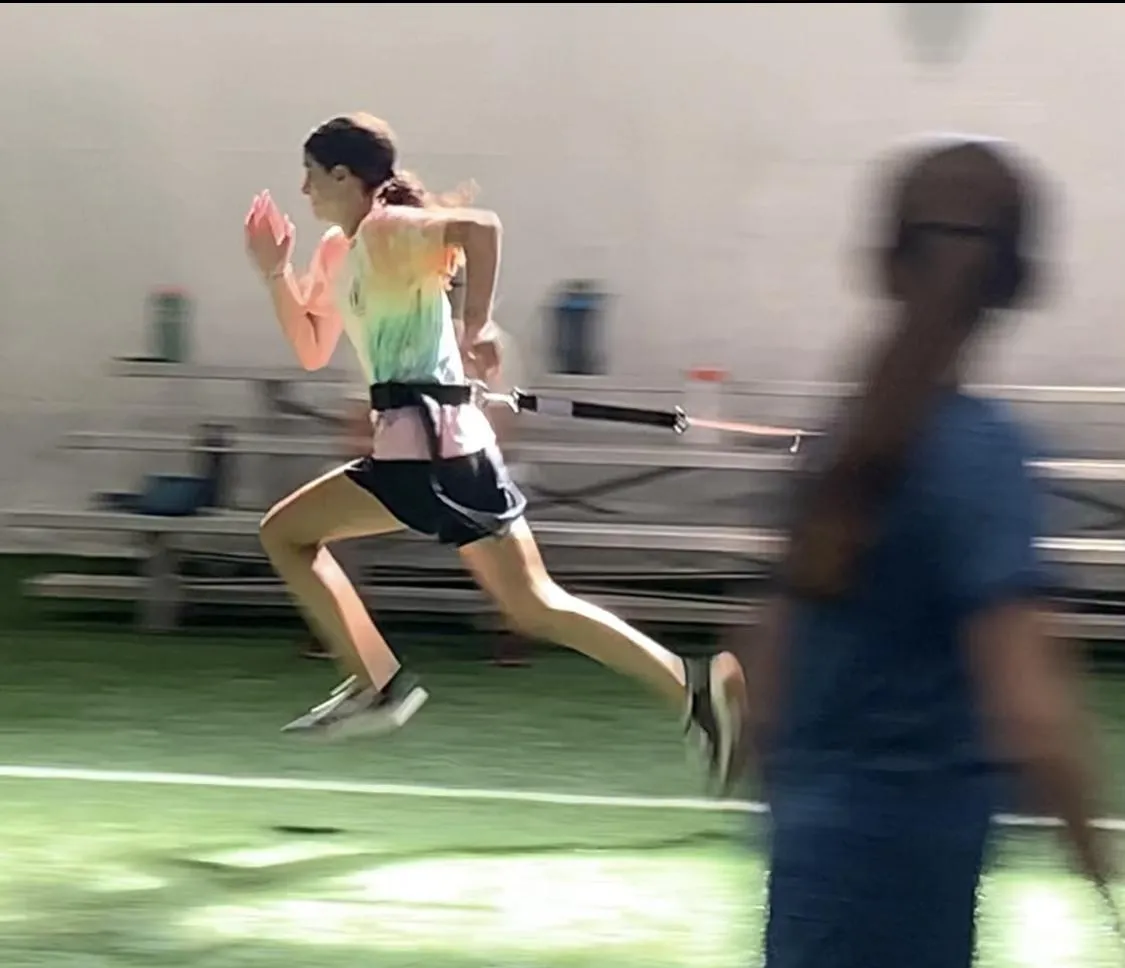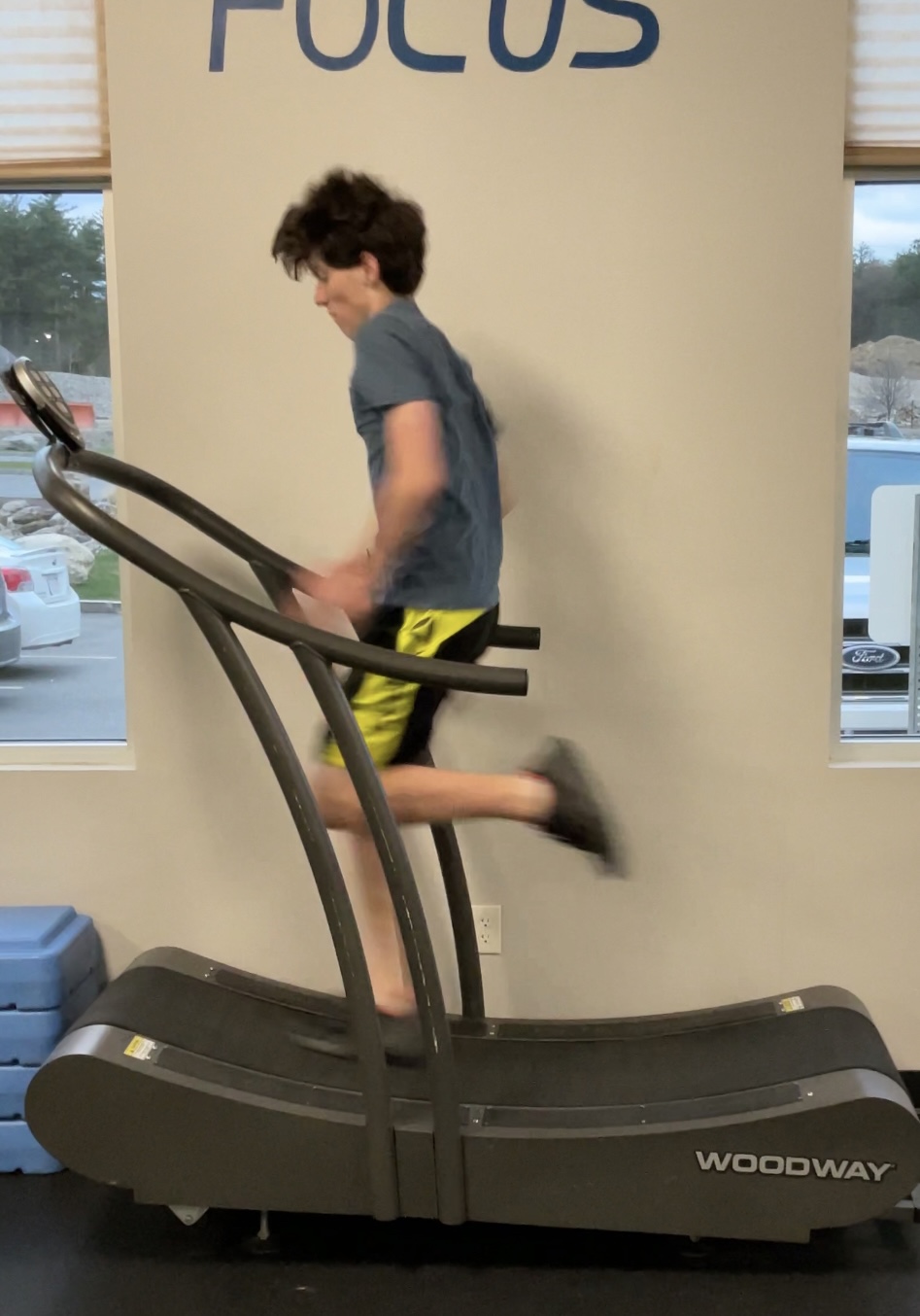ATHLETE BLOG LEOMINSTER

The Most Important Way To Genuinely Develop Speed
Humans are still smarter than machines...at least for now.
A car with disabled brakes can still accelerate to high speeds despite the dangers it presents.
Yet the human body will reflexively limit its speed if it would create injury.
Those injuries would most likely occur to your feet, because of the considerable amount of strain they're put under while sprinting.
The world's best boxers can punch with 3,000 Newtons of force in just 1/10 of a second.
That's the same amount of force a train's engine generates when moving at 65 miles per hour.
It's no surprise why one square punch can immediately knock someone out.
That same 3,000 Newton force is exactly what a world-class sprinter's foot must absorb when contacting the ground on every full speed stride.
So what's the point of all this?
If your feet and ankles are weak, your brain will instinctively limit the amount of force they absorb by running slower, or inefficiently.
Which makes them the most important areas to strengthen for those seeking to play faster.
Just as punching a heavy bag with a soft fist would injure your hand and wrist, sprinting at high speeds with weak feet causes injury.
To compensate, you'll do one of 2 things.
The first is of course to run slower, working within force levels that won't cause problems.
The second, as the great sprint coaches at ALTIS explain, is an altered stride.

Instead of absorbing the landing with the front half of your foot, which makes you faster but requires more force absorption, you'll land flatfooted.
This is notable when you see someone sprint with a forward lean and a trail leg that kicks up way too high. What we want to see is the image above, with upright posture and a faster trail leg snap forward.
You must have extremely strong and rigid feet relative to your body size for this, though.
No matter what your current ability level is, this 100% can be improved with training.
It just has to be done correctly.
Heavy weightlifting does help in some areas of speed development, but not here. You simply can't generate force fast enough to get the right training effect.
There is a belief that Velocity Based Training, or VBT, is how athletes should lift weights to get faster.
I believe this approach helps in other areas, but does nothing to build rigidity in your feet and legs.
Honestly, one of the best tools for this is an old-fashioned jump rope.
Start by getting the basic 2 foot jump down in rhythm...at least 50 consecutive reps.
Then branch out to work either endurance or intensity.
Higher intensity jumps - double unders or single leg hops - will train your feet to become more rigid at higher forces.
Yet too much of that can lead to overuse injuries, so endurance work (100-200 reps in a row of regular skips) should be sprinkled in too.
10 minutes of jump roping no more than 3 days per week is about where you want to be.
Back off when you feel noticeably slower or achy, it is a sign you need rest.
There are also a wide range of plyometric and sprint technique exercises you could also do, but jump ropes are ideal at home personal trainers.
You are forced to do it with the proper quickness and rhythm or it simply won't work.
Truly fast athletes have excellent coordination and power as well, but those skills will always be held back if you've got weak paws.
Shoring up your limiting factor is what smart training is all about.
Power Source Reviews
© Copyright 2024. Power Source. All rights reserved.
|
